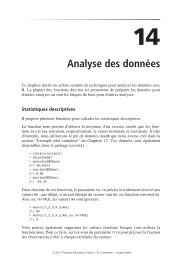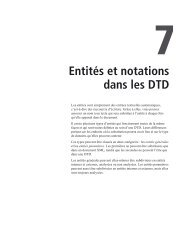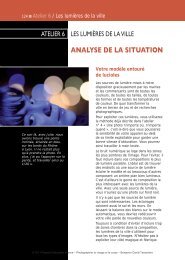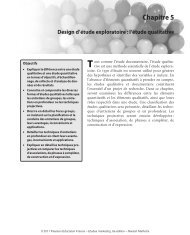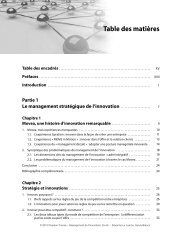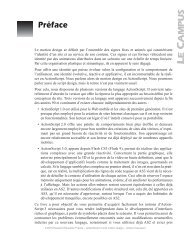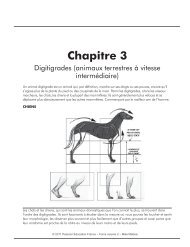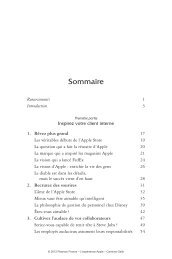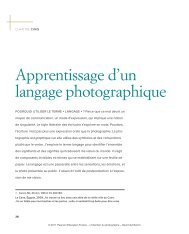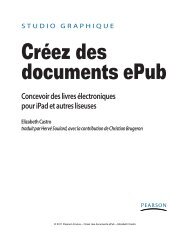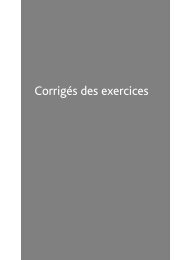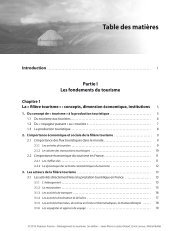Programmer en Erlang Francesco Cesarini et Simon ... - Pearson
Programmer en Erlang Francesco Cesarini et Simon ... - Pearson
Programmer en Erlang Francesco Cesarini et Simon ... - Pearson
You also want an ePaper? Increase the reach of your titles
YUMPU automatically turns print PDFs into web optimized ePapers that Google loves.
Table des matières VII<br />
En coulisse............................................................................................................................... 194<br />
Chargem<strong>en</strong>t du code...................................................................................................... 197<br />
Le serveur de code......................................................................................................... 198<br />
Mise à jour des processus .................................................................................................... 201<br />
Le fichier .erlang.................................................................................................................... 205<br />
Exercice .................................................................................................................................. 205<br />
9 Autres types de données <strong>et</strong> constructions de haut niveau.......................................... 207<br />
Programmation fonctionnelle <strong>en</strong> pratique.......................................................................... 207<br />
Funs <strong>et</strong> fonctions du premier ordre .................................................................................... 208<br />
Fonctions <strong>en</strong> paramètres............................................................................................... 209<br />
Fun expressions ............................................................................................................. 210<br />
Fonctions comme résultats........................................................................................... 211<br />
Utilisation de fonctions déjà définies ....................................................................... 213<br />
Fonctions <strong>et</strong> variables.................................................................................................... 213<br />
Fonctions du premier ordre prédéfinies ................................................................... 214<br />
Évaluation paresseuse <strong>et</strong> listes.................................................................................... 215<br />
Listes <strong>en</strong> int<strong>en</strong>sion.................................................................................................................. 216<br />
Premier exemple ............................................................................................................ 216<br />
Syntaxe des listes <strong>en</strong> int<strong>en</strong>sion.................................................................................... 217<br />
Générateurs multiples.................................................................................................... 218<br />
Fonctions standard......................................................................................................... 219<br />
Binaires <strong>et</strong> sérialisation......................................................................................................... 220<br />
Binaires ............................................................................................................................ 220<br />
La syntaxe bit.................................................................................................................. 222<br />
Pattern matching sur les bits........................................................................................ 224<br />
Bitstring <strong>en</strong> int<strong>en</strong>sion..................................................................................................... 225<br />
Exemple de syntaxe bit : décodage de segm<strong>en</strong>ts TCP.......................................... 225<br />
Opérateurs bit à bit......................................................................................................... 227<br />
Sérialisation..................................................................................................................... 228<br />
Référ<strong>en</strong>ces............................................................................................................................... 229<br />
Exercices ................................................................................................................................. 230<br />
10 Tables ETS <strong>et</strong> D<strong>et</strong>s................................................................................................................ 233<br />
Tables ETS.............................................................................................................................. 233<br />
Implém<strong>en</strong>tations <strong>et</strong> compromis................................................................................... 234<br />
© 2010 <strong>Pearson</strong> France – <strong>Programmer</strong> <strong>en</strong> <strong>Erlang</strong> – <strong>Francesco</strong> <strong>Cesarini</strong>, <strong>Simon</strong> Thompson



